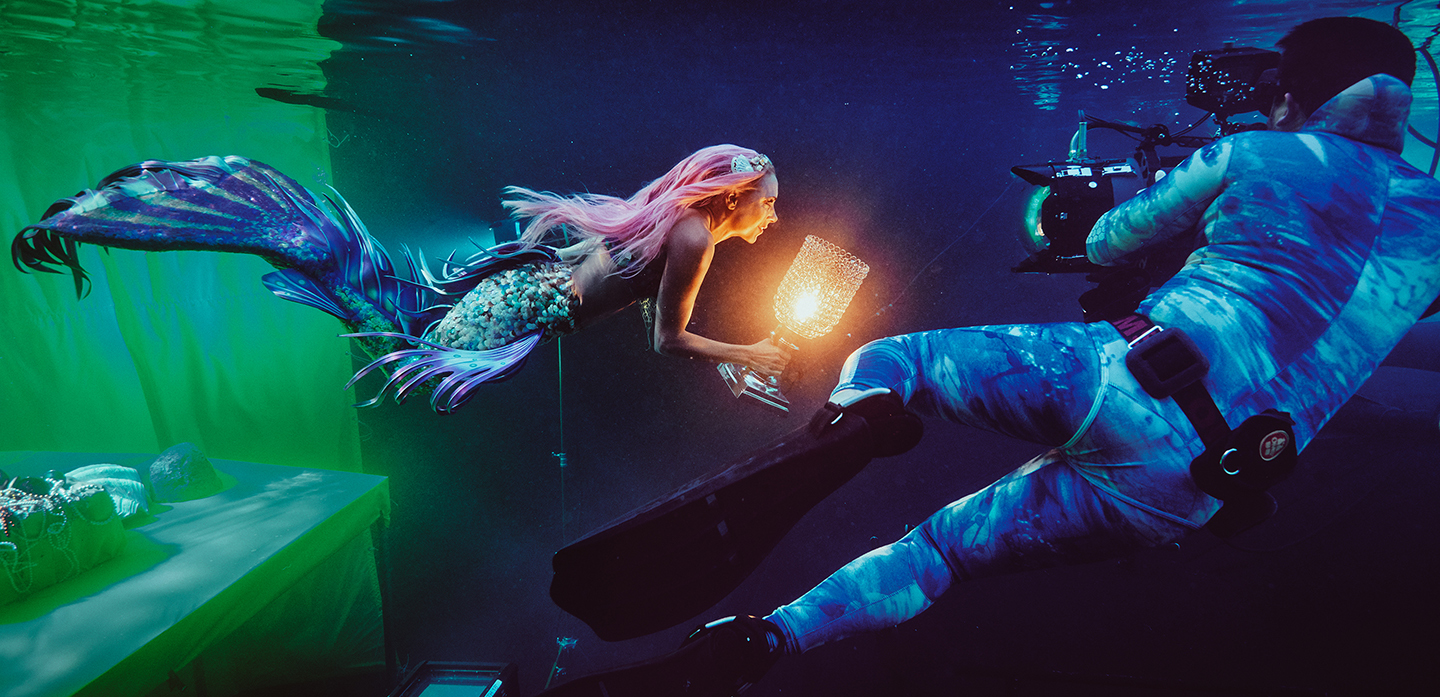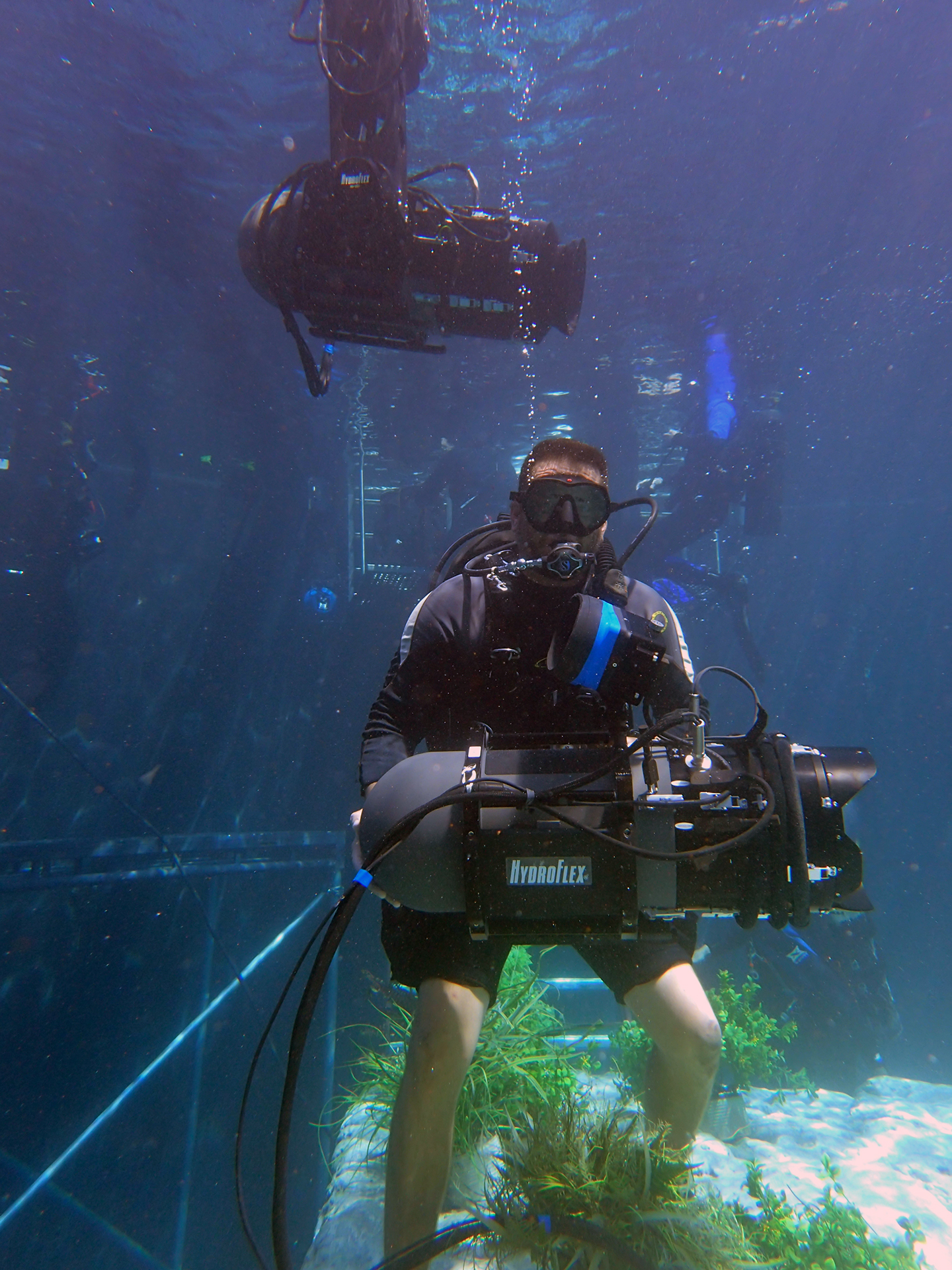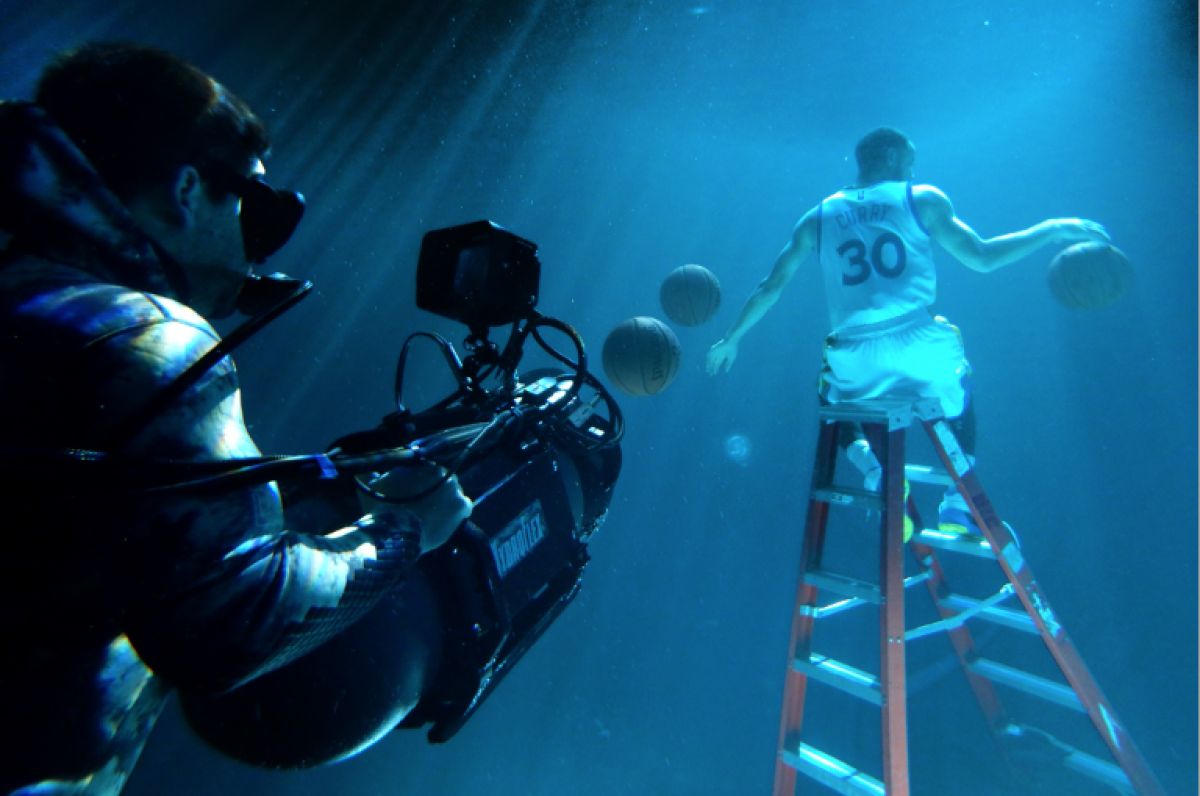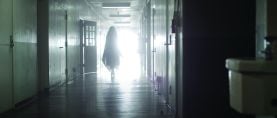
Pro Perspective: Ian S. Takahashi — Taking the Plunge
What happens when a story takes us underwater? How many of us have the first clue how to photograph action that takes place in such a radically different environment?

Kowa anamorphic lens — that’s encased in a HydroFlex RemoteAquaCam Mk5 housing.
As cinematographers, we are often asked to execute the extraordinary by capturing moments or actions of pure magic: the last glow of sunlight glinting off a climber on the sheer face of a mountainside, the hero’s harrowing escape from an exploding building, the protagonist’s perilous roll in a vehicle down a cliff. But what happens when a story takes us underwater? How many of us have the first clue how to photograph action that takes place in such a radically different environment?
I was recently able to explore the topic with Ian S. Takahashi, an SOC camera operator and underwater-cinematography specialist whose career beneath the surface began more than a decade ago. Takahashi’s credits as an underwater cinematographer include episodes of the series Major Crimes, The Last Ship, Scandal and Animal Kingdom, the recent horror feature Us, and work for Beyoncé, Apple and Nike.

Arrested Development, underwater key grip Nicholas “Soda Pop” Franchot holds an RAC Mk5. A second one is rigged on a HydroFlex HydroHead.
“When it comes to underwater work,” Takahashi offers, “even though my [Local] 600 card says ‘director of photography,’ I think that ‘cinematographer’ can end up being a better fit. It may be semantics, but it’s my job to support the main-unit directors of photography, not replace them. I prefer to work more from the European style and be considered an ‘operating cinematographer.’ It is never our goal to overtake or displace the DP, but to translate his or her vision into what works underwater — which is a very different world, with a different set of physical laws than they are used to. This support can range from just meeting on the shoot day and answering any questions they might have, to coming in at prep and working closely all the way through wrap on the water units, to breaking off on our own and capturing the scenes as a separate unit altogether.”

Our conversation only dipped a toe into this vast subject, but I still managed to soak up a wealth of information, and I look forward to diving deeper in the future. Here’s our conversation, edited for clarity.
Ian S. Takahashi: It isn’t too often that a cinematographer will have an underwater scene in a project, and it brings with it unique challenges. Everything typically associated with cinematography — like camera systems, lenses and lighting — is affected and needs careful consideration, and you also have to consider manpower, scheduling, safety and cleanliness. A small number of people have dedicated themselves to this specialized art form, and we’re able to come onto a project and support the DP and director to achieve the desired goals.
American Cinematographer: How does a director of photography even begin to approach an underwater scene?
Once you start jumping into the scene, many questions will come up. It’s important to know the technical needs as well as the visual and creative goals, because both factor into the decision-making. It’s so crucial to know what you’re going to be shooting and what kind of water conditions to expect — open ocean, surf, shallow, pool, tank, etc.
On [the series] Lethal Weapon with [1st-unit cinematographer] David Moxness, ASC, CSC, we had one camera inside a sinking car and another outside the car. We chose a smaller housing, Nauticam’s Alexa Mini housing, for more maneuverability inside those tight quarters. On Scandal, for a similar sequence with Daryn Okada, ASC, we couldn’t switch to the Alexa Mini, so we used a [HydroFlex RemoteAquaCam] Mk5, and although it was tight — that housing is so much bigger than the Nauticam — we had the benefit of greater stability inside the sinking, flooding car, and we still achieved everyone’s goals.
Lenses are also a significant consideration when shooting in the water. It’s a lot like shooting in a hazy room: If you back up and shoot with a long lens, you’re going to lose contrast, clarity, color, etc., because of all the particulate matter in the water. The general rule is ‘wide and close,’ but any rule is meant to be broken. I make a huge effort to shoot in the clearest water that I can, so that I can have a little more flexibility and use longer lenses underwater. For Beyoncé’s Lemonade film [directed by Jonas Åkerlund and shot by Pär M. Ekberg], we were able to shoot an underwater close-up on her on a 100mm. It all depends on the water conditions.
What about focusing underwater — is that a different challenge than it is on land?
With the right water techs, focus isn’t hard to do, but you need to plan out how to achieve it. There are two primary options for housings — flat port or dome — and both offer different advantages and disadvantages. When you’re shooting through a flat port, your focus distance is 25-percent closer underwater than it is on land. When you’re shooting through a dome, it creates an ‘aerial/virtual’ image, where focus is determined by the radius of the dome; 12 to 18 inches is a good approximation, meaning that you need lenses capable of those close-focus distances. Spherical primes will make your life easier, but we’ve done some great work on anamorphic lenses with diopters. Diopters can be a problem, however, if your shot goes from above water to below. With the diopter in place, your maximum focus distance is much closer, which may be a problem; in that case, it may be better to go with a flat port and adjust for the 25-percent closer distance when you go under.
Optically, the dome port allows for the focal length to remain consistent — there isn’t any magnification — but with the flat port, you’ll get 25-percent larger images underwater. Keep this in mind when shooting split-level shots of your talent. Do you want their heads to be normal and their bodies 25-percent larger?
What about lighting underwater?
Takahashi: Lighting is very interesting. In reality, very few people in this world have seen what a car looks like from the outside when it sinks, or been inside a 747 as it floods and catches fire, or danced with a mermaid 40 feet below the surface. So we get a decent amount of flexibility when it comes to lighting underwater — and I like to take advantage of that!
There are no light sources underwater except for whatever ‘practicals’ might be in the scene, so without those sources, what’s lighting everything else? When someone swims down, away from the surface, what’s lighting their face?
There’s no real source underwater, so I try to be soft and subtle and ‘real.’ I like to accomplish this by wrapping the key source around as far as I can justify, sometimes going with a hard top-source that’s 2 to 3 stops overexposed, and then go softer and less intense as we bring it around. That way we can get light on the face without it feeling too fake or like it’s coming from some other, unknown source.
The same techniques one uses above water can be adapted for use below. We’ve built book lights and 20-by-20 bounces. For Ellen Kuras, ASC on a Verizon commercial, we softened up some [HydroFlex] HydroPars with 250 [diffusion] and went direct to get light past the actor’s mask and into their eyes, while mitigating the reflection off the facemask. The new HydroFlex [SeaSun S30 housing for Arri’s] SkyPanels gets a major thumbs up from me, too!
It’s no secret that I like to under-light people in the water. For me, throwing Astera Titan LED tubes on the bottom to subtly edge-light feet and legs allows me to separate the actors from a darker background and see their bodies — when appropriate, of course. And if we’re getting a bit more playful and less ‘real,’ a 4K PAR as an under-backlight can be fantastic. But that’s me; you might not like it!
Are there any special considerations for lighting underwater — any differences from lighting on dry land?
Water is a medium that light moves through, and it changes the light’s characteristics. The longer wavelengths, red and orange, get ‘eaten up’ faster than shorter wavelengths. The farther light passes through water, the more cyan-blue it will look. If you’re in a large pool and have to move away from a warm light source, the color of the light will turn cool and cyan as you go. It can be frustrating! If you have two subjects at different distances from the light source, the light will be two different color temperatures when it hits each subject — and, technically, a third color temp by the time it hits the lens!
Thankfully, this is more noticeable at larger distances, so within the confines of most ‘normal’ shooting conditions this won’t be too big of an issue. But you will need to keep an eye out for it, and we keep multiple units and gels on hand to fix it. The newer variable-color LED units make it much easier to fix this.
Do you have any advice for someone who’s looking to specialize in underwater cinematography?
Starting a career in underwater cinematography is like anything else in this business — a challenge. Step 1: Get certified as a scuba diver. Step 2: Dive! I can’t stress this enough. Cinematography and camera operating are hard enough to do on dry land, and now you want to do it underwater? Diving, breathing and swimming underwater have to be second nature so that you can concentrate on the artistic side. But it’s not enough just to be a good diver — you also have to be a good cinematographer. It’s a marriage between these two different creative and technical skill sets.
How do you build a career? Everyone does it differently. What I can say is that working your way up with the best team you can convince to hire you is a great way to go about it. I had an amazing mentor in Mike Thomas for nearly a decade. When Mike retired, he put in a good word for me to some people like Pete Romano, ASC, and they really helped my career move forward. There was definitely a ‘sink or swim’ moment — pun intended — as my first ‘big’ job as underwater cinematographer that I got through Pete was for Oliver Bokelberg, ASC, BVK on Scandal, shooting Kerry Washington swimming. I gave it everything I had, and I must have done something right, because then I went out for Larry Reibman on Pretty Little Liars, then for Michael Weaver, ASC on Masters of Sex, and it progressed from there.
For better or worse, though, your path will be different than mine.
Underwater photos courtesy of Ian S. Takahashi.



